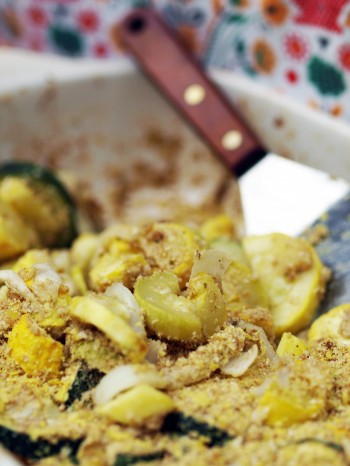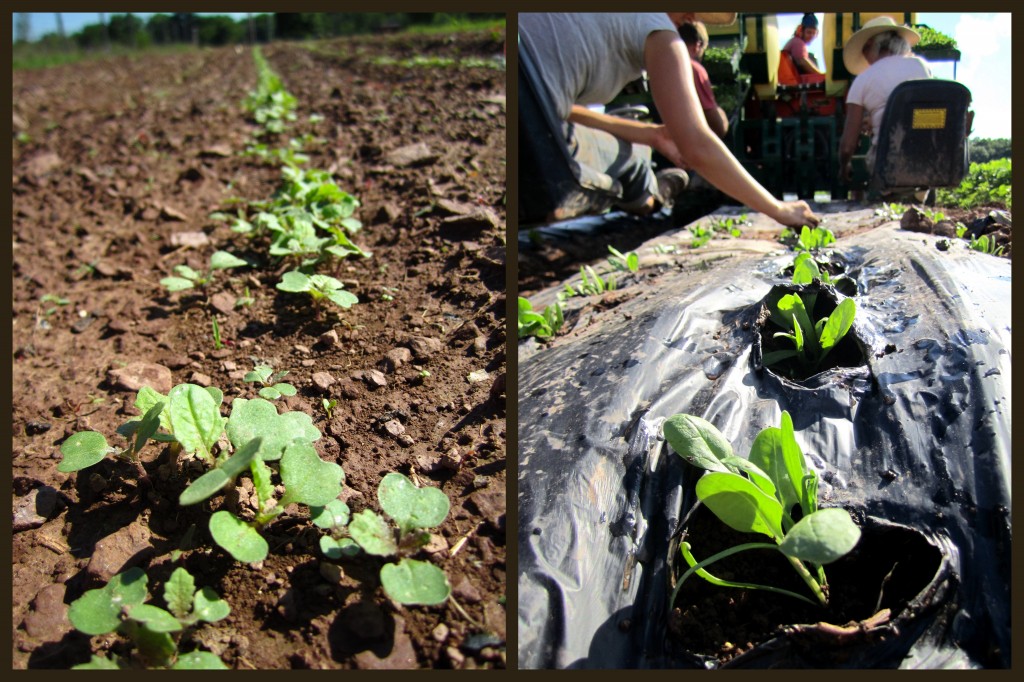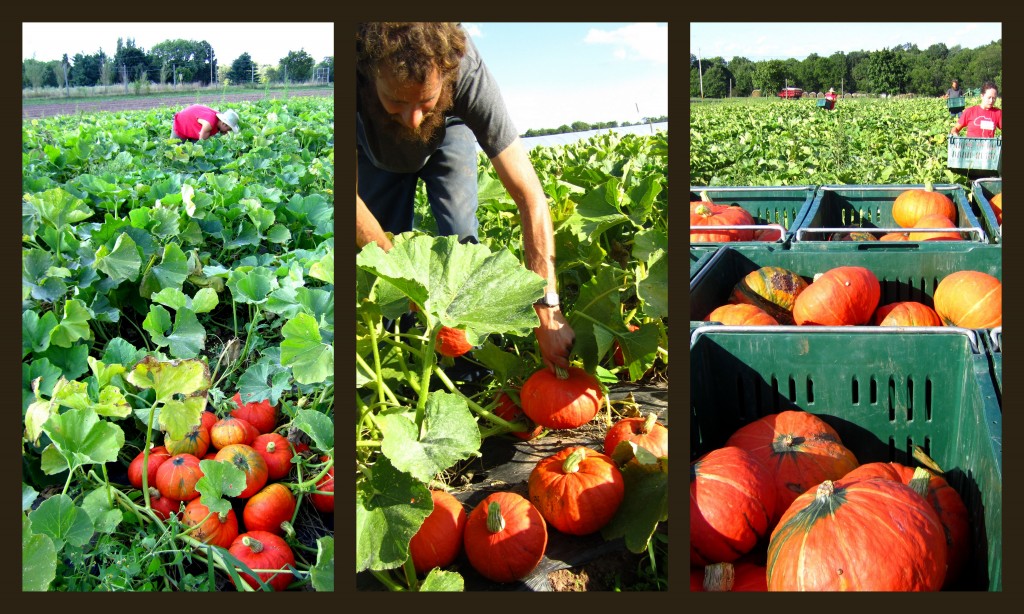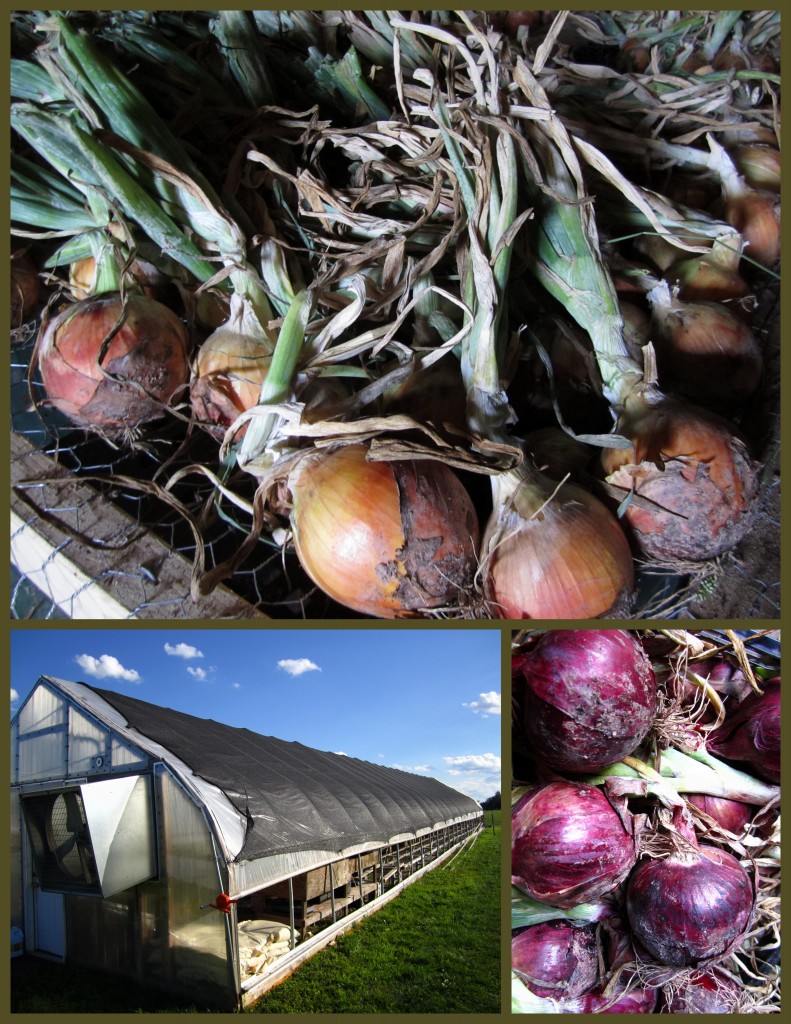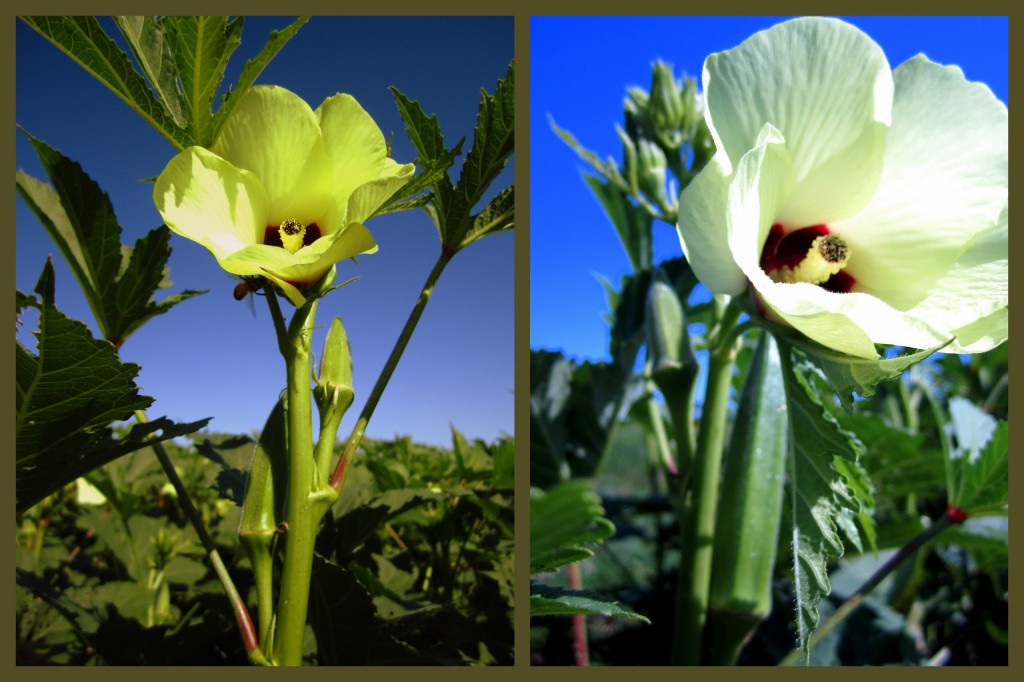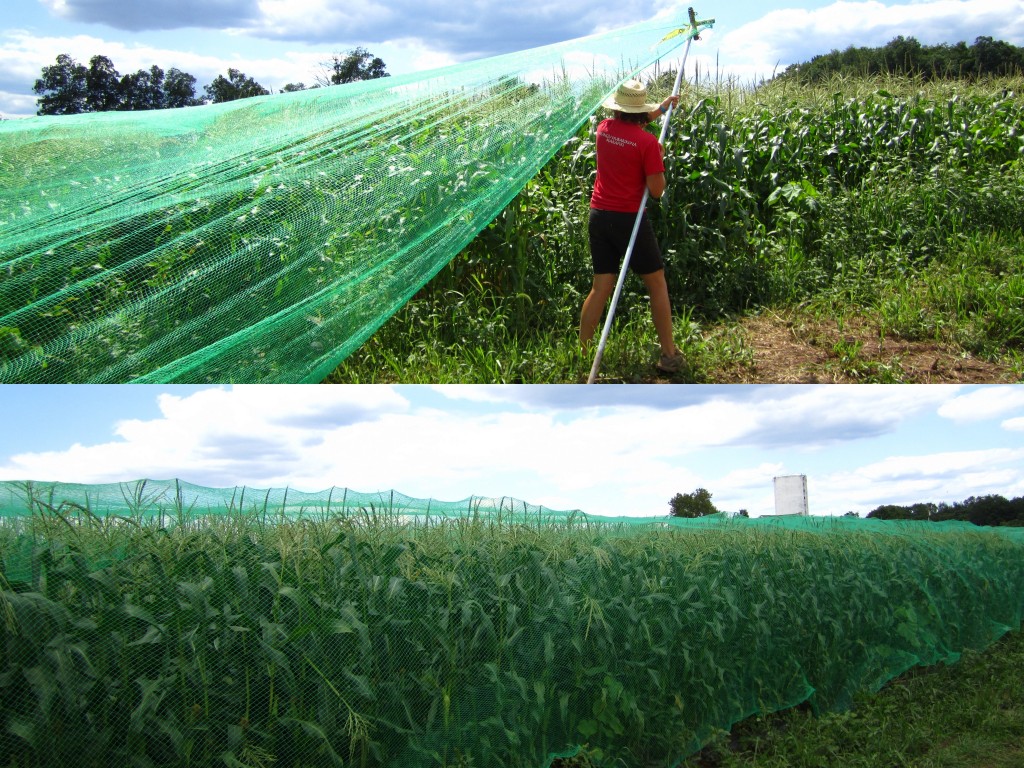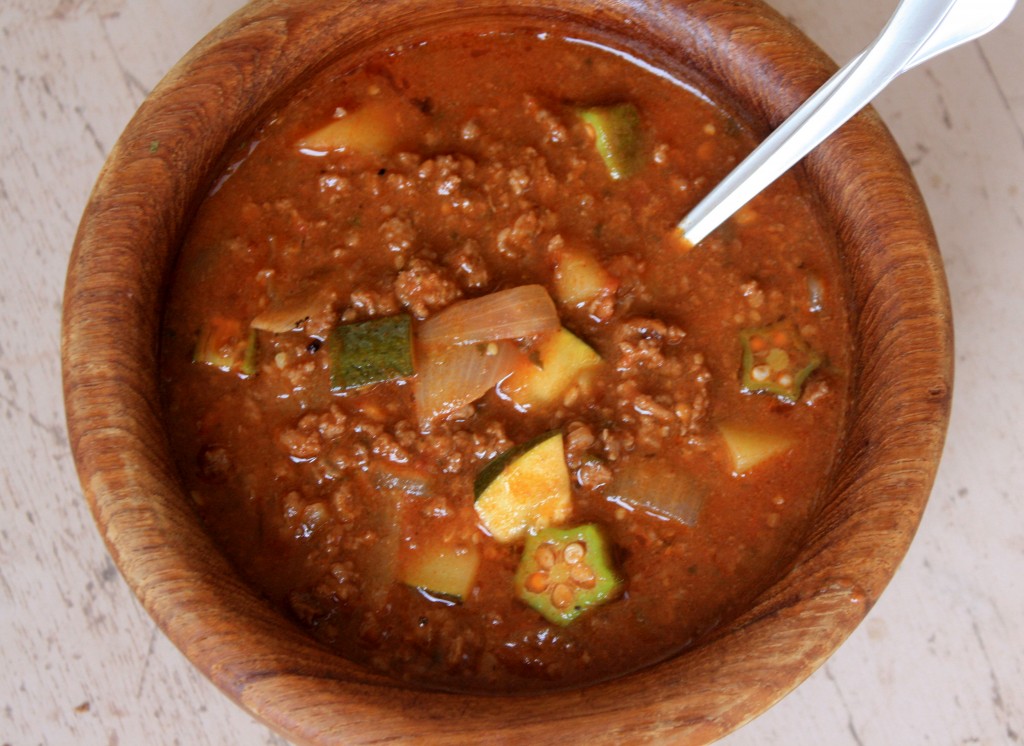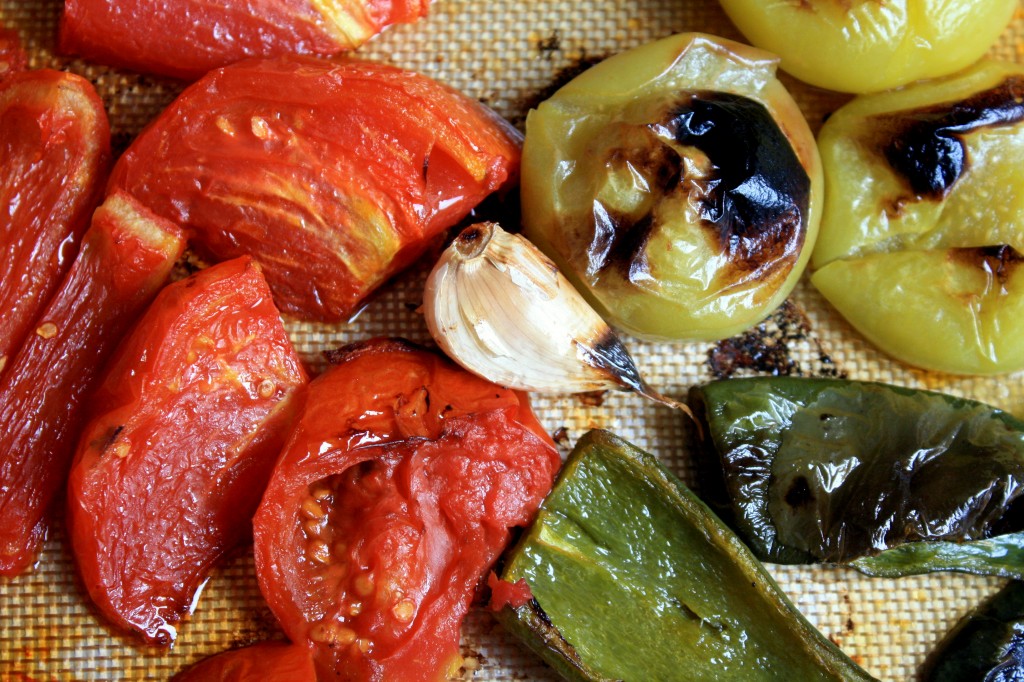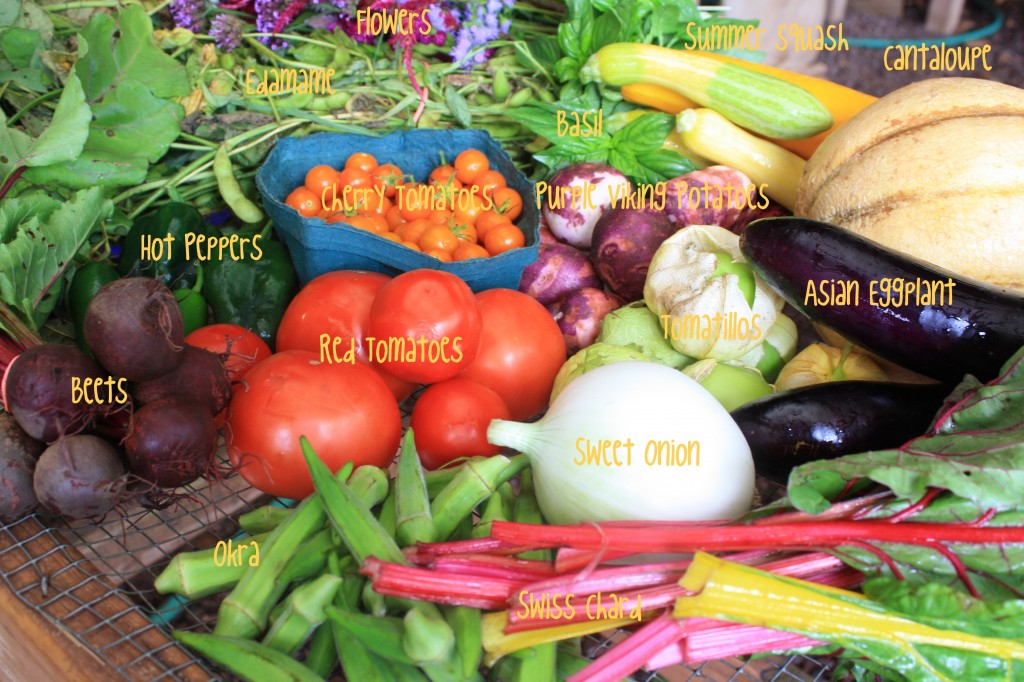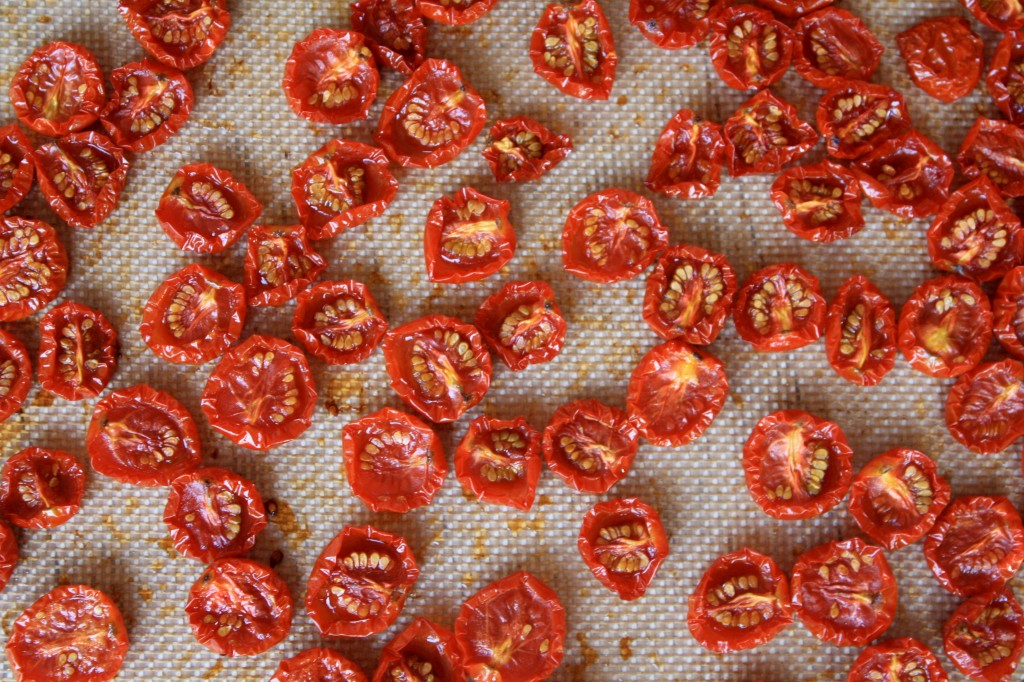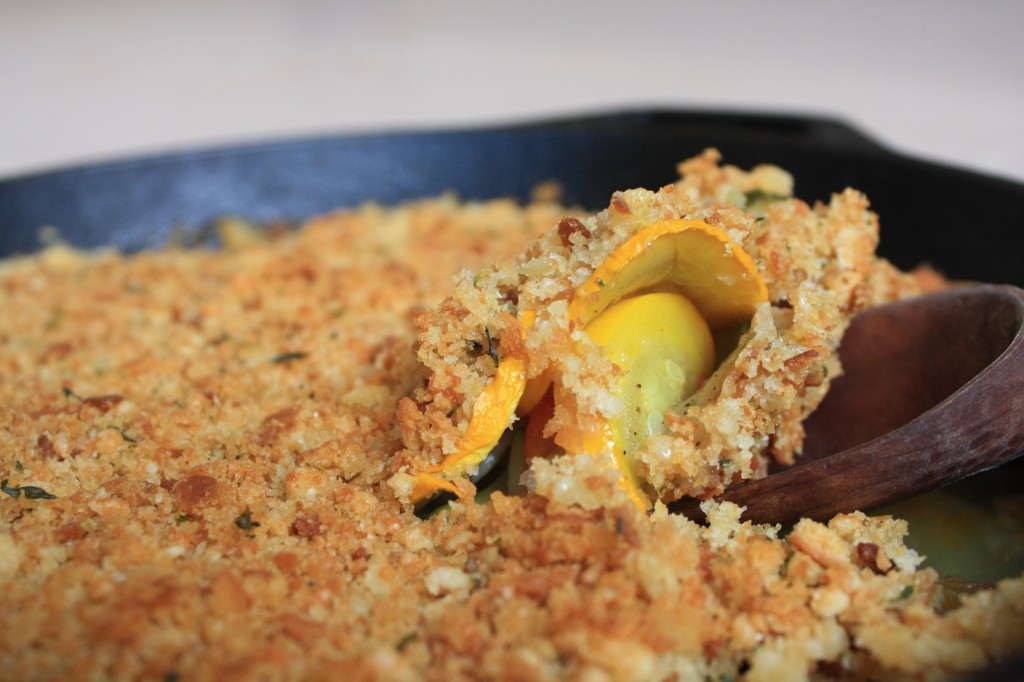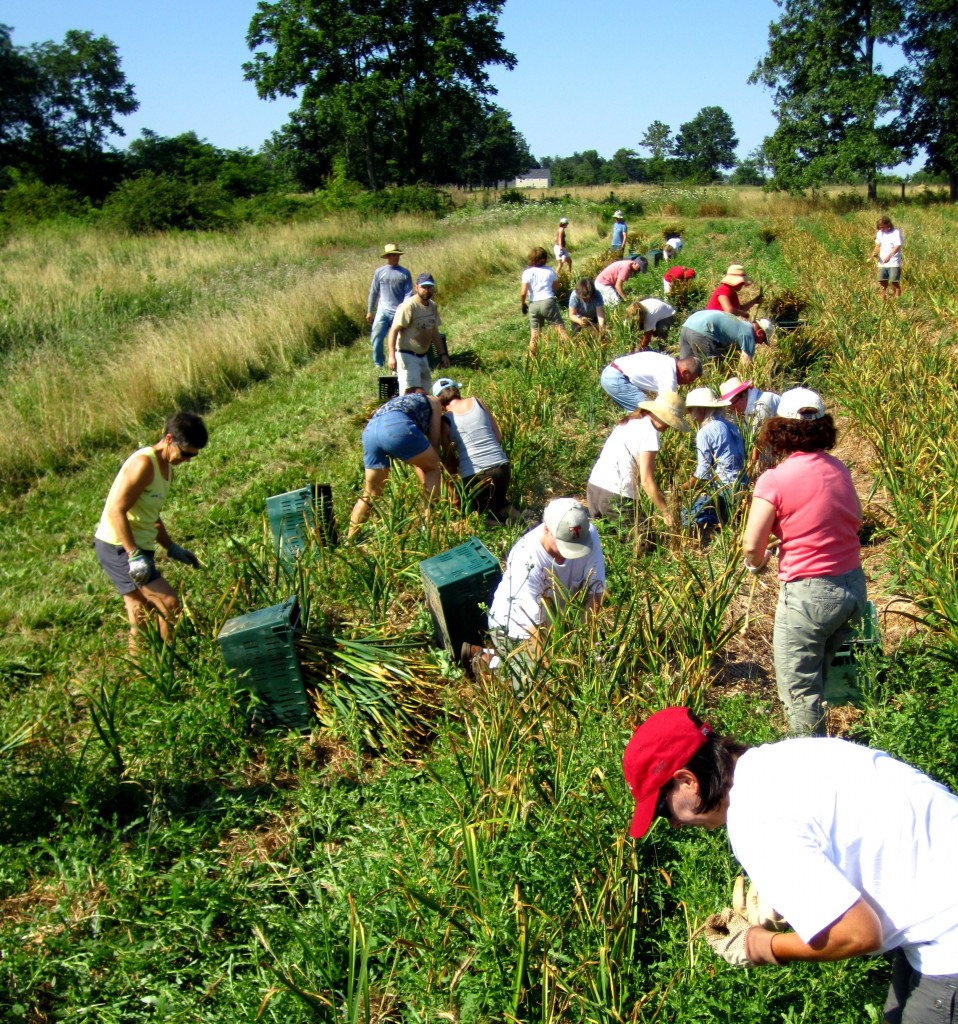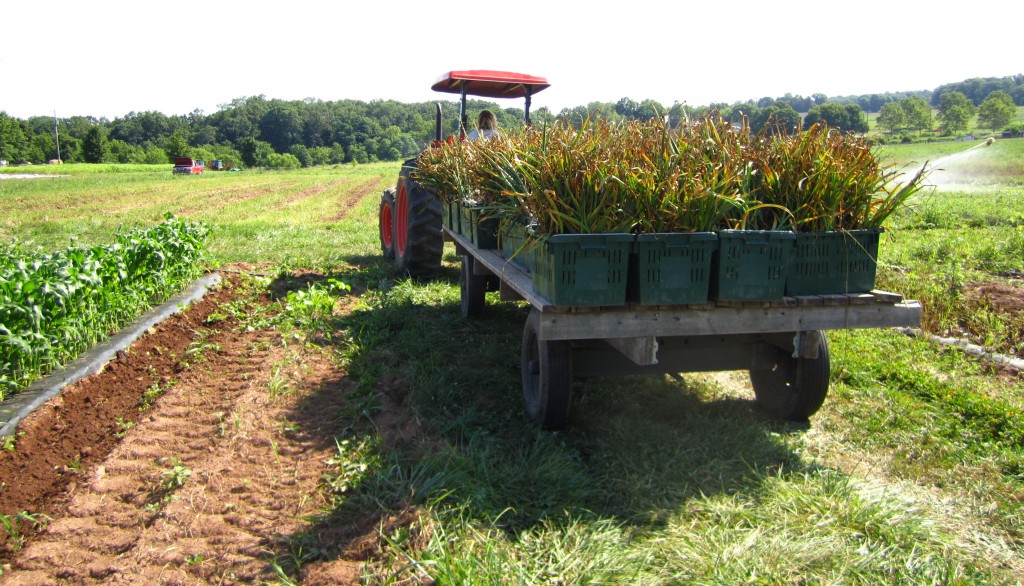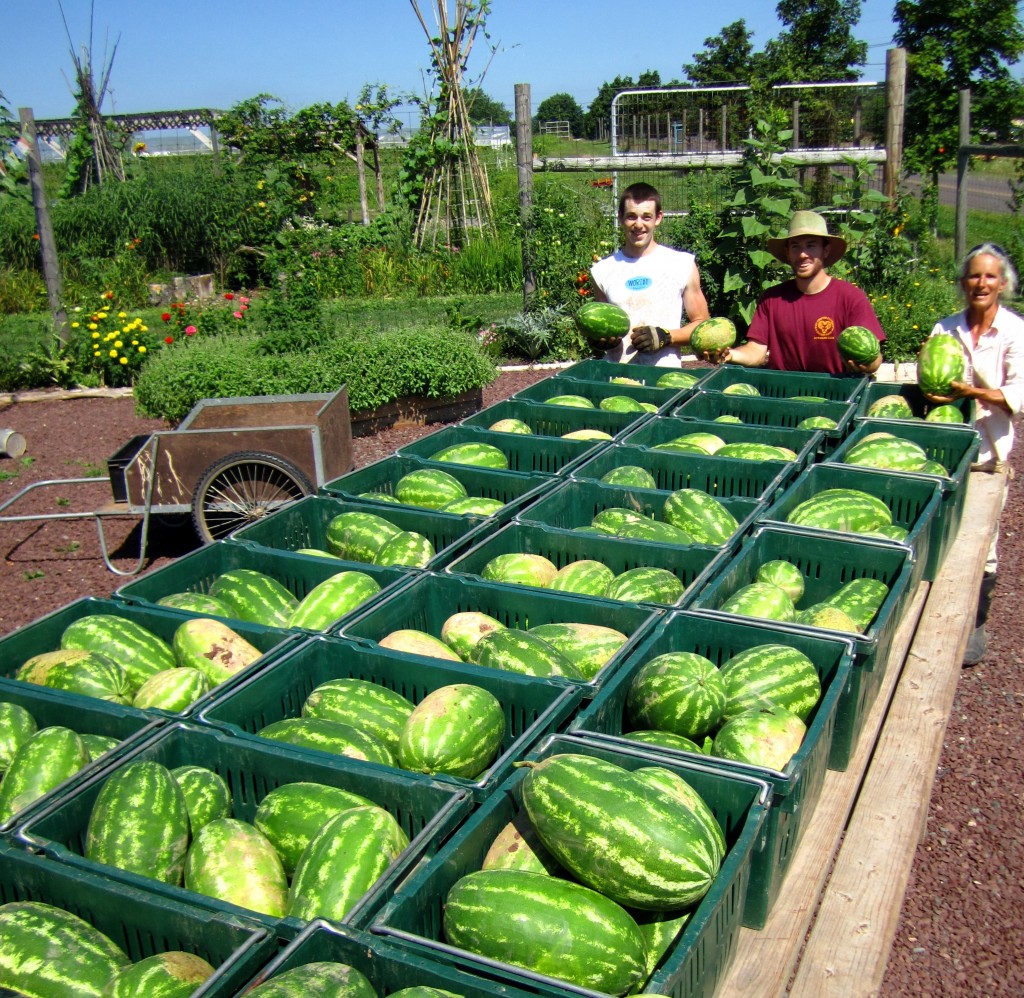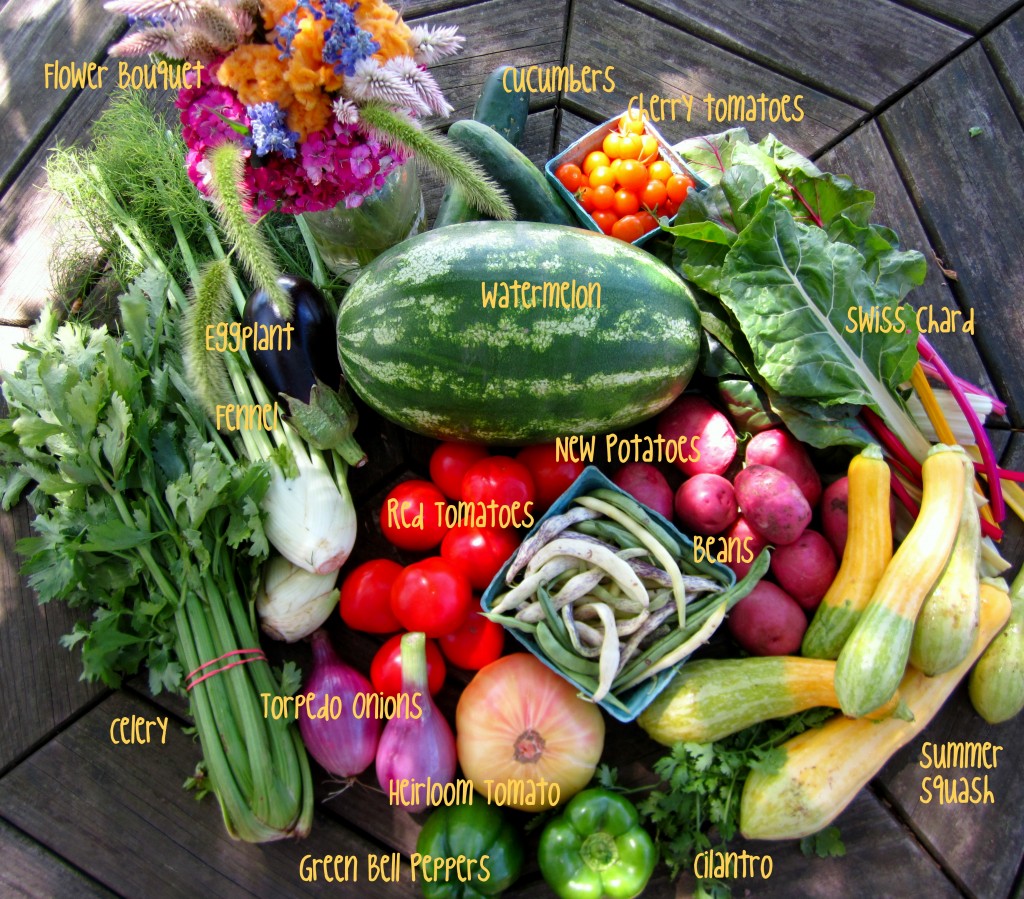Edamame: the Japanese name literally means “twig bean” (eda = “twig” + mame = “bean”) and refers to these young green soybeans grown on a twig-like branch. This very delicious and nutritious kid-friendly snack is very simple to prepare: the pods are boiled in water or steamed, until they soften. The most common preparation uses natural coarse sea salt for taste. The salt may either be dissolved in the boiling water before adding the soybean pods, or added after the pods have been cooked. Boiled soybean pods are usually served after cooling, but can also be served hot. Either squeeze the beans out with your fingers or slide them out of the pod with your teeth, getting a nice taste of the salt (the pod is a little tough and fibrous, so you don’t want to eat it). This popular snack is great with a cold beer!
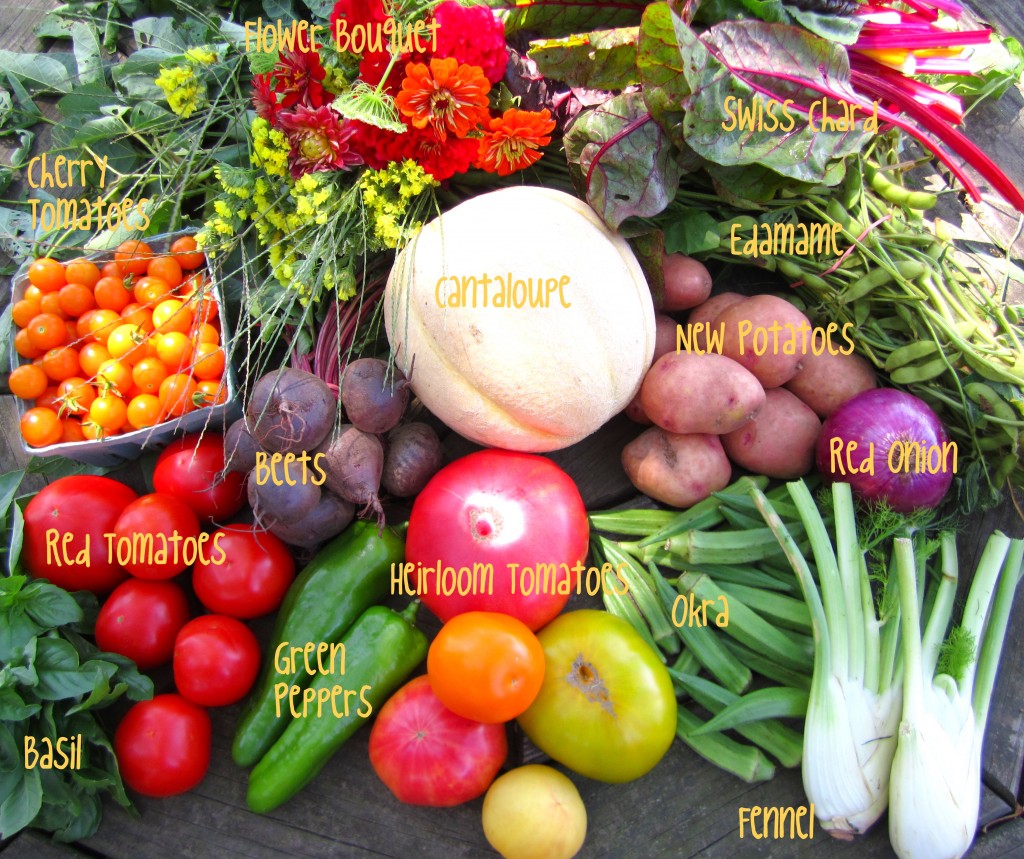
CSA share, week 10.
Chef Rich Baringer of Dinner’s Done Personal Chef Service braved last Friday’s thunderstorms and joined us again for a cooking demo during CSA pick-up. He had another wonderful assortment of recipes. Two of my favorites featured cantaloupes, which return to the share this week, and another crowd favorite featured grilled fennel.
Grilled Honey Mint Cantaloupe
First, preheat your grill to medium-low. Then, heat 1/4 cup butter and 1/2 cup honey together in a saucepan. Once melted, stir in 1/3 cup fresh mint, chopped and a dash of cayenne pepper, if desired.
Next, take 1 cantaloupe, seeded and cut into 8-12 wedges and place melon wedges on a sheet pan and brush with sauce.
Rub grill grates with a paper towel soaked in vegetable oil and place melon on grates (basted side down). Grill until lightly marked and softened, about 2-4 minutes. (The smell will be heavenly!)
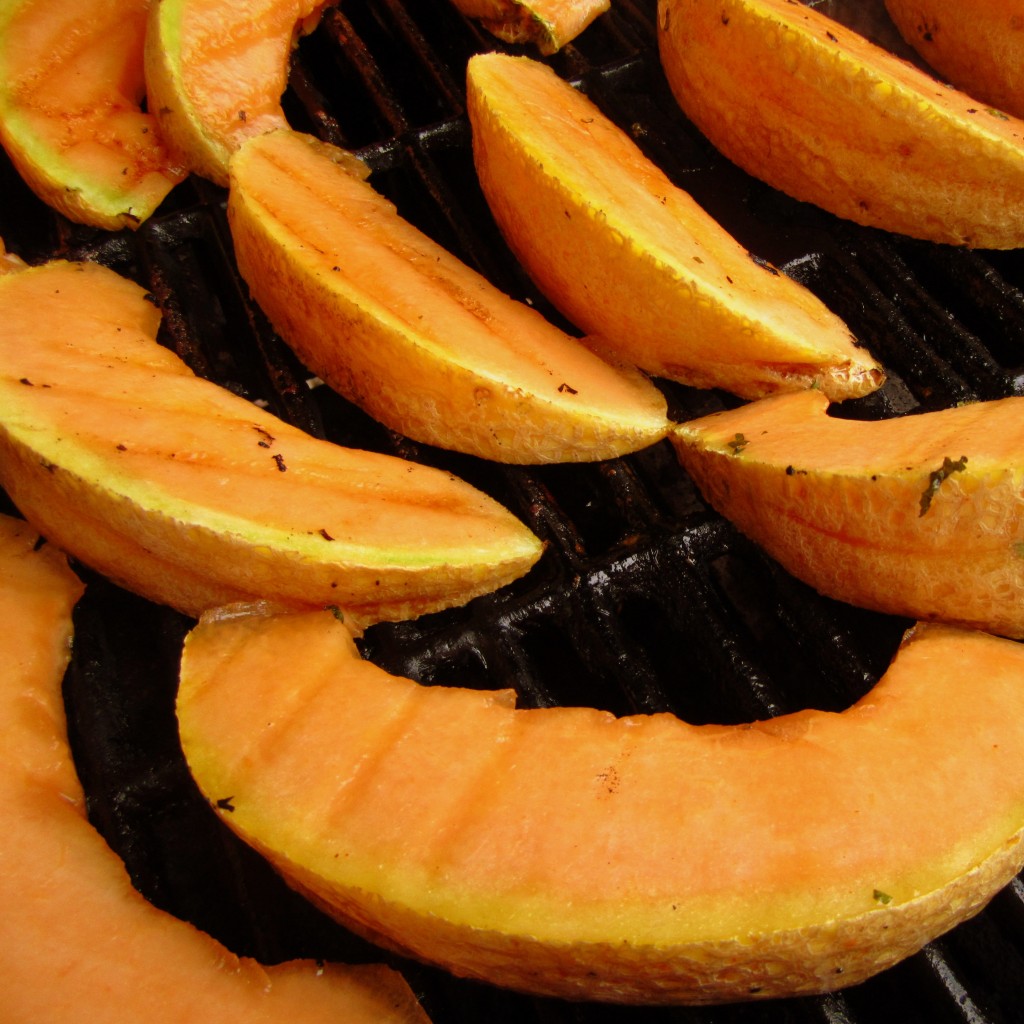
Cantaloupe wedges on the grill.
Baste tops of melon with sauce and flip to grill on other side, another 2-4 minutes.
Remove melon from grill and allow to cool slightly. Cut melon off of rind and into bite-size pieces; place in serving bowl. Drizzle with remaining sauce before serving.
Cantaloupe Guacamole
Combine the following ingredients, and serve with tortilla chips or as an accompaniment to grilled fish or steak: 2 ripe avocados, peeled and roughly mashed, ½ ripe cantaloupe, cut off of the rind and finely diced, 2 tablespoons fresh cilantro, minced, 1 teaspoon jalapeno (or more to taste), seeded and minced, ½ a 14-oz can black beans, drained and rinsed, 2 teaspoon lime juice (or more to taste), ¼ teaspoon salt (or more to taste).
Grilled Fennel from the Barbecue Bible by Steven Raichlen
Use 4 small or 2 large fennel bulbs (1 ½-2 lbs). Cut each bulb lengthwise into ½” wide slices through the narrow side.
Combine in a large nonreactive bowl and whisk to mix: 1/3 cup olive oil, 1/2 cup balsamic vinegar, 2 tablespoons honey, 2 cloves garlic, minced, 2 small shallots, minced and 3 tablespoons fresh tarragon or basil, chopped. Add the fennel and toss to coat thoroughly. Cover and let marinate for 2 hours, not necessarily in the refrigerator.
Preheat the grill to high. When ready to cook, remove the fennel slices from the marinade, arrange on the hot grate, and grill, turning with tongs until just tender, 8-16 minutes in all, seasoning with salt and pepper. Chop into bite-size pieces, if desired. Toss grilled fennel with remaining marinade and serve warm or at room temperature.
Photos and text by Tricia Borneman, Blooming Glen farmer and co-owner.






